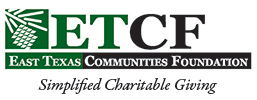For some of you, 2021 feels like an eternity behind us. For others it feels like yesterday. The passage of time can be both fleeting and painfully slow depending on how it is used. Giving USA produces an annual report that is released each summer. The report provides a close examination of giving during the past year. Recently the report on 2021 giving was released. The results are always informative and you may find some of the insights helpful as you consider your giving this year.
Giving USA: The Annual Report on Philanthropy for the Year 2021 is a report that is published annually by the Giving USA Foundation and researched and written by the Lilly School of Philanthropy at Indiana University. The major finding of this year’s report is that Americans set a new total giving record with $484.85 billion donated to charity in 2021. That’s great, but every piece of data must have context. How does this compare to recent years and how does it relate to what our country was going through at the time? The record of $484.85 given in 2021 is slightly lower than 2020 when adjusted for inflation. In fact, 2021 giving actually declined by 0.7% after adjusting for inflation.
Despite the global pandemic which began in early 2020, Americans rallied in support of charities and set new records for giving in 2020 after two years of consecutive declines in 2018 and 2019. 2020 was also a presidential election year, and after the election and amid the announcement of pending vaccines, the stock markets rallied and provided significant optimism to fuel robust end-of-year giving. With that information as a background, it makes more sense to me why giving at the national level did not see a dramatic increase in 2021. In 2021, many more people had returned to work and the economy was rebounding steadily from the pandemic. The need for philanthropy was still great, but the number of people who were completely dependent on charities and the government was declining steadily. For example, the report indicated that giving to arts and cultural organizations increased by over 27% from 2020 to 2021 while giving to human services organizations, which are the ones that provide food and shelter to those in crisis, increased by only 2.2%, which was below the rate of inflation.
In East Texas, we were fortunate to return to work fairly quickly in 2020 following the initial months of the pandemic, when compared to other states and communities. The momentum from our recovery in 2020 continued in 2021, and East Texas Communities Foundation logged one of the most generous years in our history. Oil and gas exploration and production is a vital part of the East Texas economy, so the rising price of gas in 2021, which we continue to see today, is a double-edged sword. On the one hand, rising gas prices put a strain on family budgets, while at the same time they support many jobs and generate profits for many businesses in the oil & gas industry. Cycles like this repeat regularly and unpredictably. So what can you learn and apply from a review of recent giving data? One of my takeaways is that philanthropy is a long game. There will always be needs in our community and the relative priority of those needs is uncontrollable and very personal. Our community relied on pet lovers and performing arts enthusiasts, to carry the extra burden of supporting animal charities and the arts in the midst of the pandemic, which drew much of our attention to human needs and closed theaters. Secondly, the economy has cycles that benefit individuals and businesses in parallel. When the economy is good, more people have jobs and fewer people are in need of food and shelter, but when the economy is bad, more people are out of work and in need of basic human services. Generous people respond as they are able to the crises and everyday needs around them. Businesses can do more when business is good, but individuals are always going to carry the greatest burden for supporting charities. Wise donors will put away resources in times of plenty to be able to respond when times are hard and needs are great. Perhaps considering a donor-advised fund or similar giving strategy can help prepare you to respond better to needs around you and help you Give Well.


Recent Comments